Of all the Magic books, this is the one I thought I remembered the best. It turns out all I remembered was the folk ditty that inspired the title, and a few small bits about witchcraft. Everything else read as completely new.
Maybe the book I remember was another one built around “Lavender’s blue, dilly-dilly.” Maybe memory is just being weird. Either way, I did enjoy this, though with some fairly large doses of “Ummm… no.”
Lavender-Green Magic was first published in 1974, but at one point we learn that the story is set in 1970. It has a flavor of the late Sixties, with the dad missing in Viet Nam, the mom scraping out a job at a nursing home so isolated no one wants to work there (I find myself wishing that story had been written, though probably not by Norton, and probably as a horror novel, but I digress), and the kids dropped off with their grandparents. The way they ride around in the back of an old pickup truck is so not 2019—a nice lady author would never dare have kids do that now, with all the safety regulations that have accreted in the past fifty years.
What I had not remembered at all was that the family is Black, and living in Massachusetts, close enough to Salem that the witch trials are an ongoing undertone in the story. The protagonist, Holly, is keenly aware of her racial identity, so much so that she actively repels attempts by the white kids at her new school to make friends. She’s also all too aware of class and economic status: Her grandparents’ lives in the middle of the town dump are an ongoing source of shame and resentment.
Her twin siblings, Judy and Crock (short for Crockett), are a year younger and much less resistant to fitting into their new home. Crock is quite mature and quite socially adept. Judy acts and talks like a much younger child, but she also makes friends easily. As the story progresses, she becomes less and less willing to let Holly order her around. She plays the Lucy role in this portal fantasy.
Holly is a complicated character. Norton’s forte is not characterization, but with Holly she manages both depth and nuance. Some aspects are not totally comfortable in 2019—Holly presents as an Angry Black Girl, and the message is that she should be less angry and more willing to realize that it’s all in her head; really, white people just want to be nice. That from the standpoint of 2019 is… ummm, no.
Racial and ethnic diversity is a theme of the Magic books, and it’s clear Norton did a lot of thinking about it. She cared. But here she puts the burden of acceptance on the minority character, relaying a message of “let’s stop dredging up all that old bad history and just get along.” This plays better in Octagon Magic, where a white kid confronts racism from that side of the divide. The theme is the same, but the emotional burden is shifted in a more contemporary direction.
Still, much of what Holly is and does rings true to me for the period and the age group. She’s in sixth grade, just on the edge of adolescence, and her whole world has been turned upside down.
Holly has a strong sense of how the world ought to be, and a strong resistance to change. She acts out rather badly, nearly succumbs to the powers of evil, and has to be saved by her younger, more adaptable siblings. It’s a less abrupt transformation than Norton’s usual, and a more realistic portrayal of the emotional storms of the almost-teenager. I was a lot like that, bad parts and all. I can relate to her.
The adventure itself, traveling in time through a three-hundred-year-old garden maze, has much in it for me to love. There’s herb magic and witchcraft both good and evil. There’s a carefully crafted historical setting with deliberate parallels to the witch trials in Salem. It all ties in through the maze, the family that owns the land, and the twofold problem the kids have to solve: the attack on the so-called witch in the seventeenth century, and the selling off of the land to developers in the twentieth.
The latter is similar to the situations in Octagon Magic and Dragon Magic, with an even more directly personal element, in that the grandparents will be homeless if the land is sold. Holly learns (albeit kicking and screaming) to care about this, and ultimately plays a key role in resolving it.
There’s a lot I love about this book, and one thing, racial politics aside, that truly set my teeth on edge—even after I figured out what it was actually doing. That’s the dialect that almost all the adult characters speak. The grandparents talk like Uncle Remus and the white townsfolk like the good souls of Sixties television Westerns. As for the seventeenth-century characters, their speech is thick with thees and thous and weird archaic syntax. It’s trying so hard for verisimilitude that it defeats itself.
Buy the Book
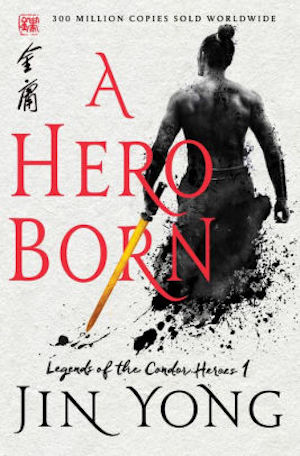

A Hero Born
Then it dawned on me. The kids are speaking regular English, as is their mom. Everybody else is essentially speaking a foreign language. It’s the same mechanism as the comic strip Peanuts, which was hugely popular in the Seventies. The kids there spoke standard English, but the adults, on the rare occasions when they showed up at all, spoke gibberish. For the television cartoons, there’s even a sound generator for the teacher’s voice.
So here we get broad and regionally inaccurate dialect for nearly all of the 1970 adults, and broad and nearly incomprehensible dialect for the 1600s. The only really clear voices are those of the kids. Which is really rather clever.
Speeches aside, there’s so much here that’s worth reading, now as well as then. History is real and literal and immediate, libraries and research are places to actively seek out, and librarians and archivists are allies of even the most disaffected kid. The events of three hundred years ago have direct and important consequences in the present day. The story sheds a whole new light on the value of primary sources.
What’s particularly fun is to see the little bits of tribute Norton pays to her adult works (and, tangentially, the science-fiction genre). There’s a hint of the psi/esper powers of her Forerunner universe, a nod to that beloved science-fiction trope, the robot, and echoes of the Witch World in both aspects of the maze, particularly the monsters of the left-hand path.
Norton has moved away from the Fifties nightmare of atomic holocaust, but there’s still a glimmer of her starfaring future. Then again, the Forerunners go back into the remote past; who knows what they might have left on this planet, which our time-traveling kids and their seventeenth-century friends and enemies could not have been aware of.
I’ll be reading Red Hart Magic next time, to complete the series. I don’t recall having read it when it was first published, but I may have, somewhere in my library-prowling.
Judith Tarr’s first novel, The Isle of Glass, appeared in 1985. Her most recent novel, Dragons in the Earth, a contemporary fantasy set in Arizona, was published by Book View Cafe. In between, she’s written historicals and historical fantasies and epic fantasies and space operas, some of which have been published as ebooks from Book View Café. She has won the Crawford Award, and been a finalist for the World Fantasy Award and the Locus Award. She lives in Arizona with an assortment of cats, a blue-eyed dog, and a herd of Lipizzan horses.











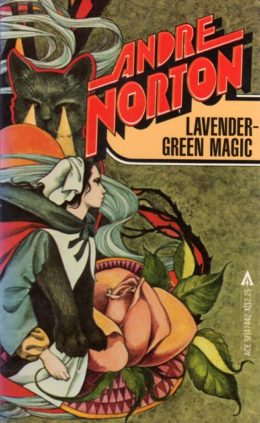
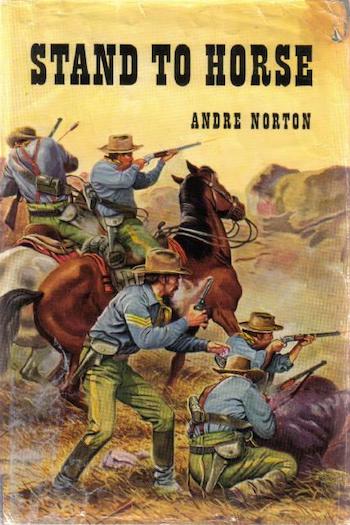
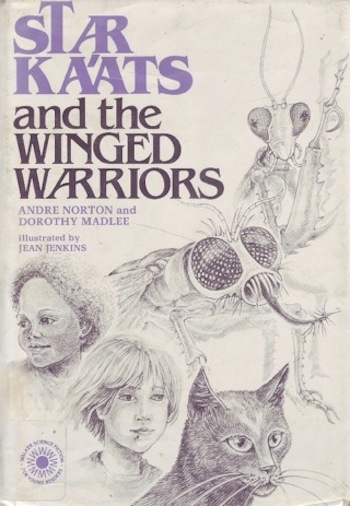
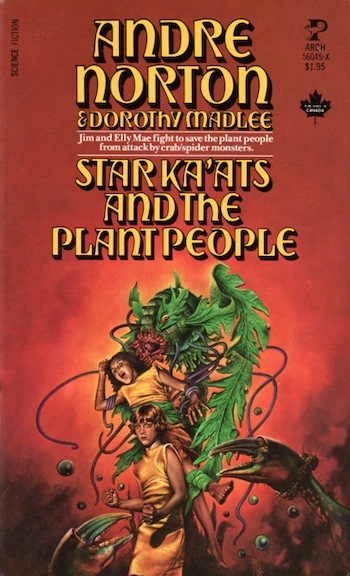
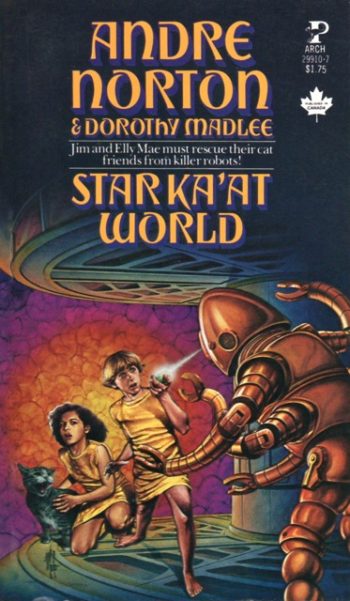
Magical garden-based children’s time travel adventures in New England? I would not have guessed there was a second book (beside Edward Eager’s The Time Garden) that fit that description…
“Blah, blah, blah. Yacky smackity.” Taz’s dad in the cartoon, TAZ-MANIA. He speaks normally, but Taz tunes him out as gibberish after the first few sentences.
The only thing I really recall about this book, was it this book?, is the beads made out of flower petals and herbs. I thought that was cool.
I just reviewed a juvenile paranormal mystery which used a slave ghost instead of time travel, plus lots and lots of original documents searches, to the same effect. It was so earnest and bland that I doubt its target audience would be interested, but it would be a good kids’ book club selection. For anyone interested, it’s STEELE SECRETS by Andi Cumbo-Floyd
Star Solidiers (Kindle edition) is currently free on Amazon (I’m assuming for Prime members). I was intrigued by the mention of the Forerunners universe and looked it up on Amazon. I was pleasently surprised to see it for the low cost of nothing.
@3 Awesome, thank you! I had that on my list (it’s actually two novels together, Star Rangers and Star Guard). Grabbed and saved.
@2 There are instructions for making rose beads at the end of the book. I might try that this summer when the roses are blooming.
Looks like there are quite a lot of Nortons free on Kindle, as well as some rather cheap bundles, so thank you also from me mrbert!
I think this is the most successful of Norton’s “Magic” juveniles overall, with realistically developing, relatable characters, and a magical setting that ties characters, events and themes together more effectively than in the other novels. Years ago, before the recent spate of spec fic with heroes of color, I used to recommend this to parents looking in vain for kids’ SFF starring Black characters. (There was a thread started by an African American parent about this on Amazon back in the day, and I recommended this book.) This, and Janet Kagan’s Uhura’s Song!
I don’t think the book implies that Holly’s issues are all in her head and she should just get over them, though I agree that the onus is too much on her and not enough is expected of the white folks in terms of change. Holly’s anger is related to the war and to class issues, and those are real, so that the anger’s genesis is honored in that sense. Even if her anger does make her vulnerable to making the wrong turn in the maze. I would have liked it, though, if her anger could also have played a clear positive role in saving her and the situation.
There are, as you point out, other issues in Norton’s depiction of the Black characters, such as the grandparents’ dialect. Though it didn’t bother me here as much as in Octagon Magic.
In gender terms, I’m glad that both the good and the evil witch-figures are female, along with the protagonist. Gender doesn’t get symbolically linked with either the right or the wrong turns.
Judy writes, “She plays the Lucy role in this portal fantasy.” Did anyone else read that as being Lucy Van Pelt, rather than Lucy Pevensie? It was momentarily very confusing.
Oh my god, thank you for writing about this. I’ve been trying to remember what these books were, but I was remembering this and Octagon Magic as one book and it was getting me all confused when searching.
The one reaction I’ve seen from an actual black person to this book was … not happy. https://spiralsheep.dreamwidth.org/578707.html
@10 Yeah. That’s the problem with it. Yep. What is critical for us now is to listen to actual minority voices, and to read books written by minority writers, and to Pay Attention to what they say and how they say it. In 1974 Norton was being a nice liberal. In 2019 she’s got some big problems. The review sums them up in no uncertain terms.
@7 I agree with the above-linked review.
Oh, totally. And I wouldn’t recommend it to African American parents nowadays. But back in the day, when there were so few SFF kids’ books with Black protagonists available, this was welcome to some kids of color. And Norton, as you say, does get points for trying, rather than making all her leads Default White.
Apart from the issues about race/ethnicity, I still feel that this is the best written of Norton’s Magic juveniles. Of course we can’t read it apart from those issues, so I don’t give it to kids today.
I loved this book when I first read it in the late 70s, when I was about 10 or 11. While it obviously doesn’t read in the same way now, it did make me aware from halfway around the world that life for African-Americans wasn’t exactly as friction-free as it seemed for the people in Sesame Street. I think this may have been the first book to make me aware of slavery.
So for the time, outside the US, it was great. But it’s very right to talk about its faults now in the context of fiction and social awareness of racism definitely having moved along.
These Magic books were definitely my favourite Nortons, although I still love the Solar Queen adventures and the Forerunner books